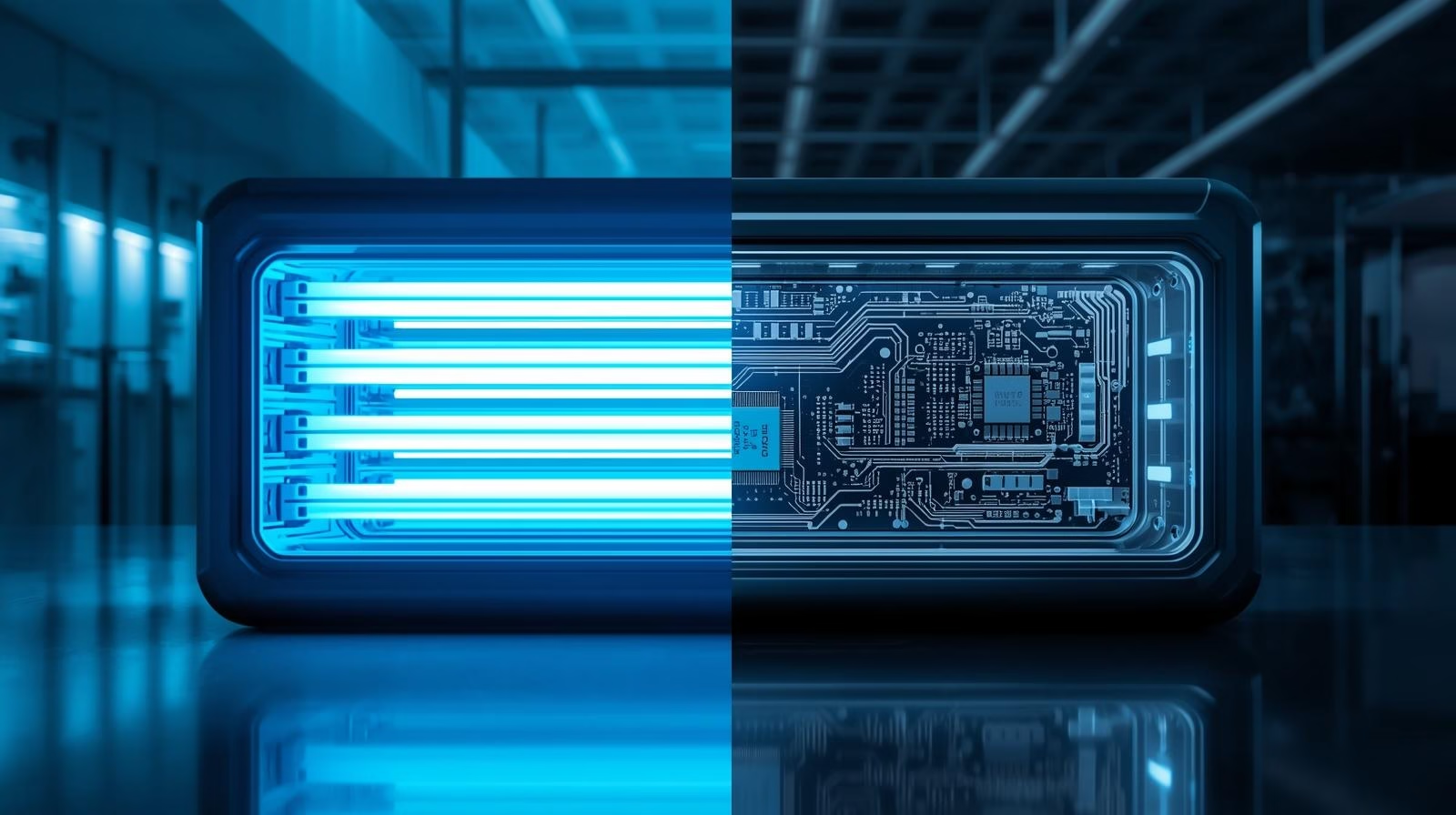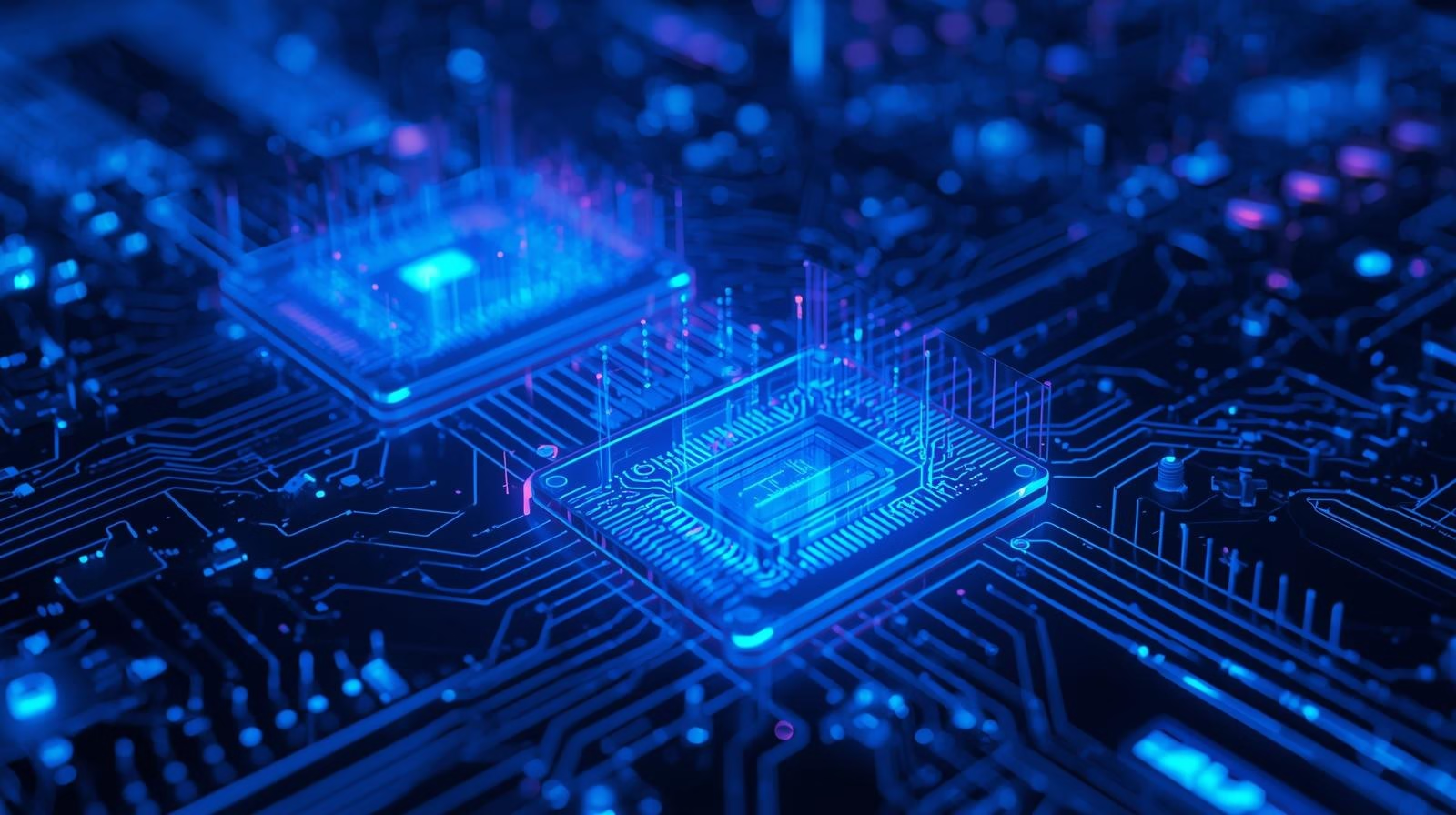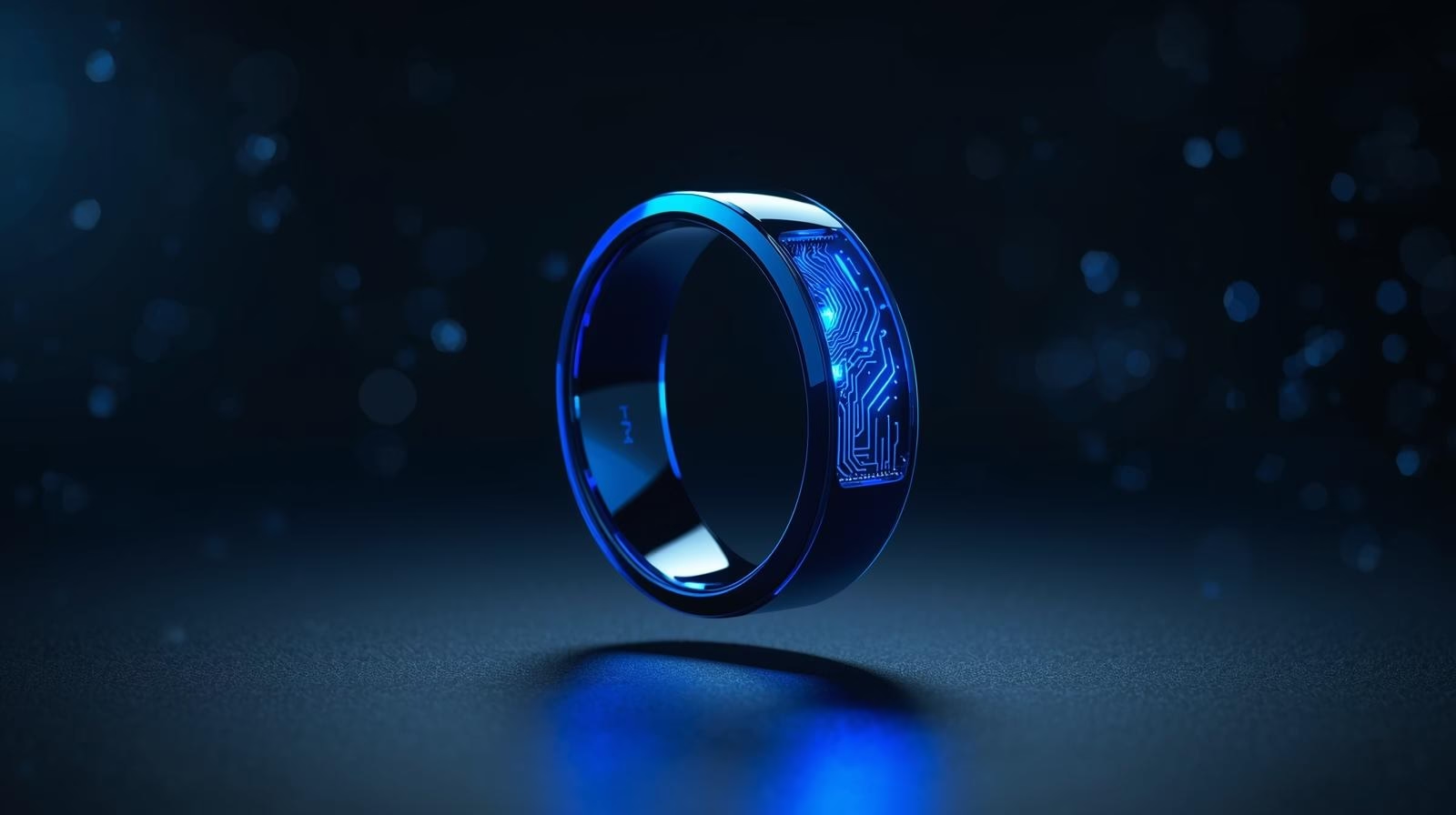Step Into the Light: The Growing Role of Indoor UVB
In today’s indoor-driven world, access to natural sunlight is increasingly limited, leading to growing concerns around health and wellness. This shift has quietly affected overall well-being, as limited sunlight reduces the body’s natural vitamin D production and impacts mood and immunity. At the center of this innovation lies indoor UVB lighting—a technology designed to replicate the essential part of sunlight that supports vitamin D production, skin health, and vitality.
Apart from medical use, UVB lighting is now entering homes, workplaces, and public spaces, driven by advancements in electronics and design. Its expanding role highlights a powerful convergence of wellness and innovation, making indoor UVB an essential solution for modern living and a rapidly evolving global market.
Bringing the Sun Indoors: Why UVB Light Is Making a Comeback

For centuries, the sun has been the most dependable energy source for mankind. However, with modern lifestyles increasingly confined indoors, people are no longer getting the same natural advantages of sunlight, notably UVB rays, which play a key role in human health. Indoor UVB lighting is taking the responsibility to fill this void, eliminating the risk of sun exposure in a controlled environment.
Exposure to UVB rays triggers the body’s natural production of vitamin D. This single nutrient strengthens bones, boosts immunity, and supports mental well-being. Unlike supplements, UVB light enables a more natural and holistic form of vitamin D synthesis.
Several factors are driving the renewed interest in UVB lighting,
- Urban lifestyles limit direct sunlight due to high-rise living and long indoor hours.
- Health awareness has grown, especially post-pandemic, as people seek preventive solutions.
- Technology advances have made UVB lamps safer, energy-efficient, and electronically controlled.
- Wellness integration has expanded, with homes, workplaces, and healthcare adopting UVB solutions.
Besides health, UVB lamps are implemented in hospitals, research laboratories, and workplaces, where controlled exposure supports treatment, innovation, and well-being.
In essence, bringing the sun indoors reflects a shift towards healthier, smarter environments where wellness and technology converge.
What Is UVB Light, and Why Does Your Body (and Tech) Care?
When people think of sunlight, they often imagine warmth, brightness, and energy. But sunlight is more than what the eye can see. The sun produces several kinds of invisible ultraviolet (UV) radiation, differing in their physico-chemical properties. UVB light that has the wavelengths 280-315 nanometers plays a vital role in both human biology and technological applications.
Why Your Body Needs UVB?
A process is initiated when UVB rays penetrate the skin, triggering a complex process that converts cholesterol-based substances into vitamin D3, the active form of vitamin D. This vitamin is essential for:
- Bone strength and density- Vitamin D is essential for calcium absorption, helping prevent conditions like osteoporosis and rickets
- Immune regulation- Adequate vitamin D levels are crucial for immune regulation, helping the body fight infections and reduce autoimmune risks
- Mood and mental health- Lack of vitamin D has been linked to fatigue, depression, and SAD (seasonal affective disorder), all of which have been eased by regulated UVB exposure, as it contributes to serotonin levels being balanced and the overall mental health being restored.
That’s why UVB therapy is widely used in medical settings to treat skin conditions like psoriasis, eczema, and vitiligo. Controlled UVB exposure reduces inflammation and abnormal skin cell growth, improving patient outcomes.
Why Technology Cares About UVB?
While UVB’s biological benefits are well known, its technological importance is equally fascinating. In electronic devices, research, and factory work, the use of controlled UVB exposure has been implemented for the following purposes:
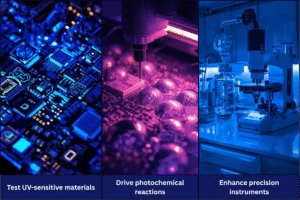
- Test UV-sensitive materials– Electronics and coatings are evaluated under UVB light to measure durability and resistance to environmental stress.
- Drive photochemical reactions– Certain polymers, adhesives, and coatings cure or harden under UVB wavelengths, making it vital for production processes.
- Enhance precision instruments– Laboratory and medical equipment often use UVB to simulate natural conditions, enabling accurate testing and product development.
Engineers and scientists are using UVB to create a controlled environment where they can come up with new ideas, design longer-lasting products, and offer technologies that would work in real-world conditions.
The Crossroads of Wellness and Innovation
What makes UVB lighting unique is its dual value—bridging health and technology. In one sense, it is a must-have for the well-being of people, as it compensates for the deficiencies caused by the trend of staying indoors. In another, it is allowing the advancement of precision manufacturing and the development of the scientific field, where the use of a controlled exposure is not only helpful but also required.
Therefore, this is the reason why indoor UVB lighting has been embraced from the point of view of a wellness solution, as well as an innovation facilitator. It’s not just about simulating sunlight indoors; it’s about delivering a wavelength essential for both biological health and scientific precision.
Not Just a Bulb: The Smart Electronics Behind UVB Lighting
Indoor UVB lighting has evolved far beyond traditional lamps, becoming smart systems that combine electronics, precision engineering, and software intelligence. Key components include:
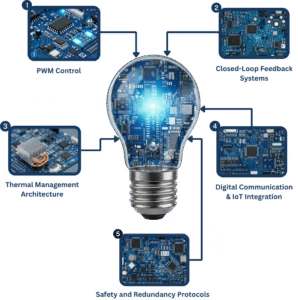
- Pulse-Width Modulation (PWM) Control: Allows users to adjust UVB intensity in fine increments without spectral drift, ensuring stable performance for both home and clinical applications.
- Closed-Loop Feedback Systems: Photodiodes are responsible for the real-time irradiance measurement, thus providing the data to embedded microcontrollers, which in turn adjust the power supplied so that the UVB dosage remains accurate.
- Thermal Management Architecture: Integrated heat sinks and thermoelectric coolers prevent overheating, maintaining LED lifespan and spectral stability.
- Digital Communication & IoT Integration: Enables remote monitoring, exposure scheduling, and data logging through Bluetooth or Wi-Fi connectivity.
- Safety and Redundancy Protocols: Protection against overcurrent, temperature cutting at certain limits, and fail-safe timers that work in a way so as to minimize the risk while maximizing the therapeutic efficacy.
By combining high-precision electronics, smart control algorithms, and thermal optimization, indoor UVB lighting becomes a data-driven, clinically relevant device, transforming human-centric wellness into a reliable, technologically advanced solution.
From Hospitals to Homes: How Indoor UVB Is Changing Lives
The evolution of UVB lighting from hospital use to home integration demonstrates how healthcare technology is becoming more personalized and accessible. Hospital-grade UVB lamps play a key role in dermatological treatments, vitamin D synthesis, and immune support. Key aspects include:
- Precision-Controlled Therapy: In hospitals, UVB lamps are a doctor’s first choice for dermatological treatments, vitamin D synthesis, and immune support. Advanced electronics make it possible to have the exact wavelength, intensity, and exposure time, thus eliminating the potential risk of overexposure.
- Smart Home Integration: Modern UVB systems automatically adjust light intensity and exposure duration based on user profile and proximity.
- Data-Driven Wellness: IoT-enabled systems record usage patterns, send reminders, and sync with health apps, turning therapy into a personalized routine.
- Energy Efficiency and Safety: Progressive designs of electronic devices go together with thermal management and energy optimization, thus making the units smaller, more efficient, and safer for prolonged use at home.
- Scalable Lifestyle Solution: Indoor UVB lighting is no longer limited to medical purposes. It is still possible to combine clinical precision with daily convenience by using it for preventive health, mood regulation, and workplace wellness.
Where Design Meets Wellness: The OEM Opportunity
Research on UVB exposure, health, and technology keeps progressing, and the possibilities for indoor UVB lighting are enormous. Beyond personal wellness, UVB lighting is influencing architectural design, workplace ergonomics, and electronic manufacturing.
The rise of indoor UVB lighting presents a valuable opportunity for Original Equipment Manufacturers (OEMs) to innovate at the intersection of health, design, and technology.
Creating these devices demands precision engineering to balance light intensity, safety, and energy efficiency, alongside smart features like IoT-enabled controls and adaptive exposure for optimal wellness outcomes. For OEMs, it’s not just about producing lamps—it’s about building wellness-centered devices that combine reliability, usability, and aesthetic appeal.
At Syrma SGS, we specialize in turning these design challenges into market-ready products. Partner with us to transform ideas into reliable, cutting-edge UVB solutions that redefine wellness innovation.
Disclaimer: Images used in this Blog are AI generated
